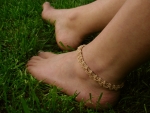We chose to treat the ankle sprain because it is the most common. There are also sprains of the knee and finger, but they are much rarer.
Victim of a sprain
 At first, when you are the victim of a sprain, avoid putting your foot on the ground as much as possible. The ankle should be avoided as much as possible. Let the ankle rest for at least 48 hours.
At first, when you are the victim of a sprain, avoid putting your foot on the ground as much as possible. The ankle should be avoided as much as possible. Let the ankle rest for at least 48 hours.
First aid
Quickly apply an ice pack or something cold to the ankle. Be careful not to put the ice directly on the ankle, you risk a burn. Use a cloth between the ice and your ankle. Do this about 4 to 5 times a day, avoiding leaving the ice pack on your ankle for too long.
Cold bombs are to be used at the time of the injury. Avoid spraying the cold less than 25cm to avoid any risk of burns.
Strapping
For a benign sprain, application of cold and rest will be sufficient for healing. For a moderate or severe sprain, you will have to strap your ankle with a bandage. The strapping should support the ankle and the foot while not impeding the circulation of blood.
Resting position
To avoid swelling in the ankle, try to position your raised leg as much as possible. You can, for example, rest your ankle on a pillow to elevate it during the night.
Return to sport
Most sprains can be treated between 2 and 12 weeks depending on their severity. To avoid a relapse, strengthen your ankle through walking and strengthening exercises in the pool. If pain persists, see a doctor or physiotherapist.
You can strap your ankle in prevention to limit the risk of spraining, but this does not guarantee anything.
Alternative medicine
Comfrey help soothe bruises and speed up healing. They should be applied immediately after the injury.


